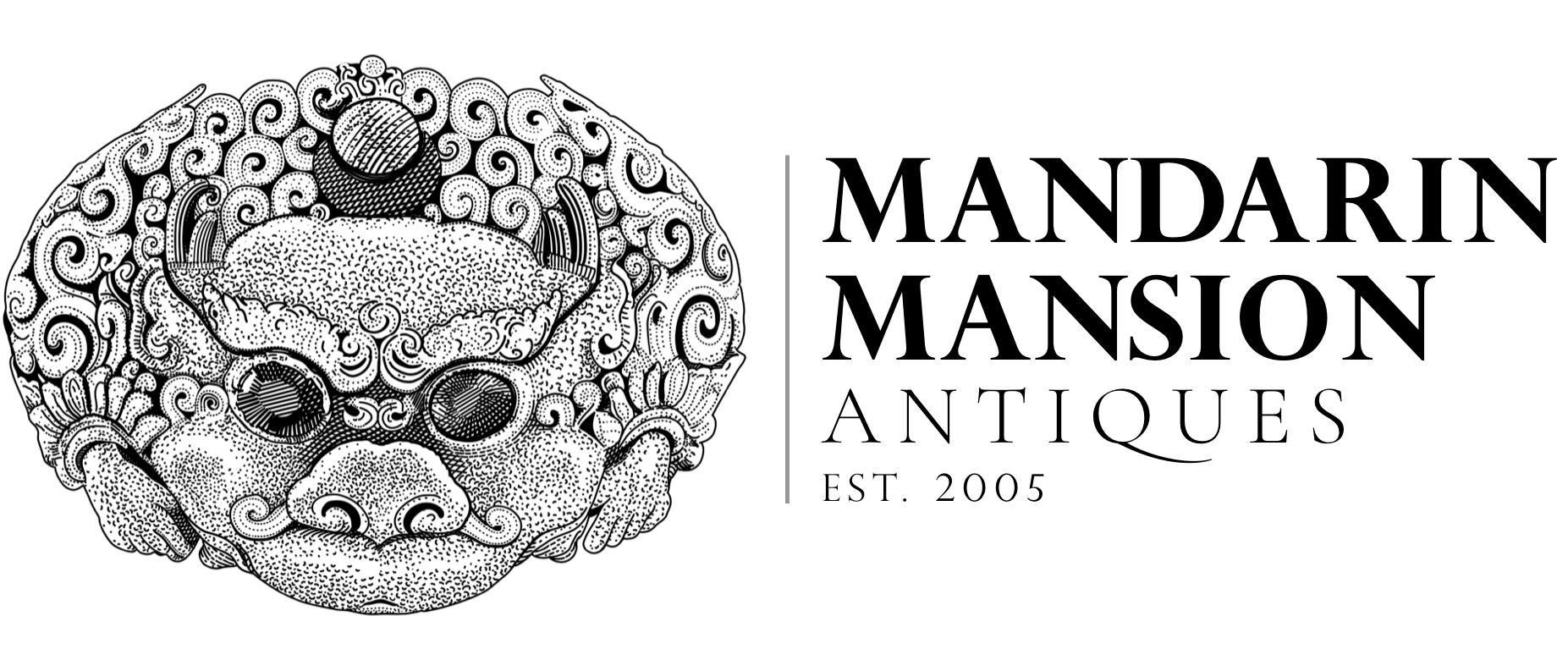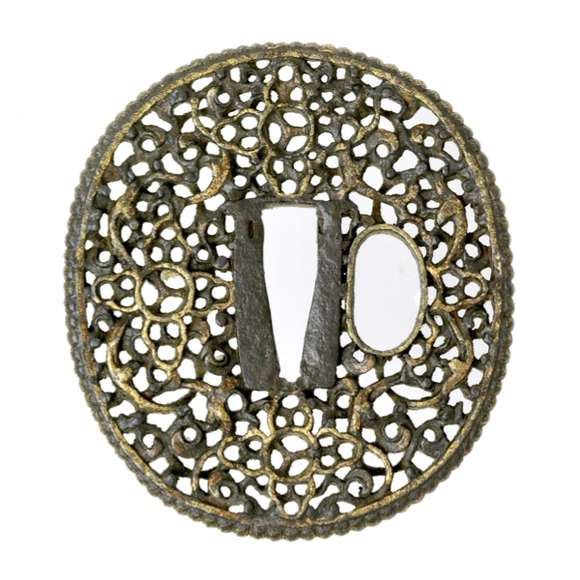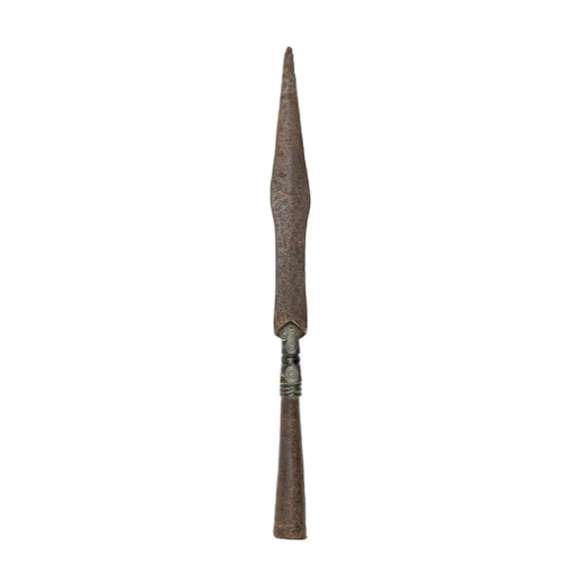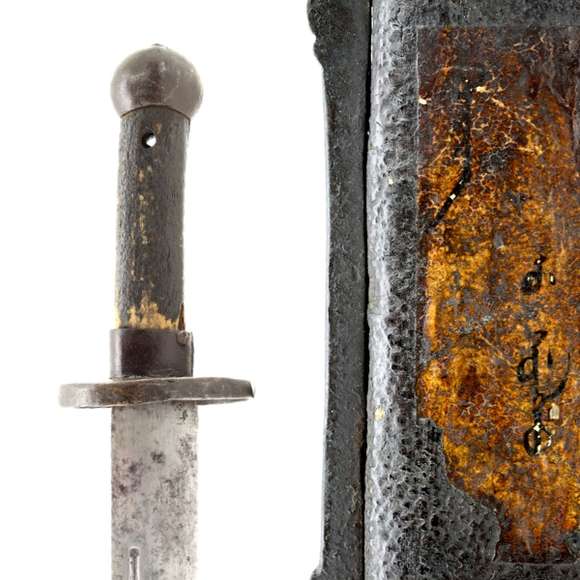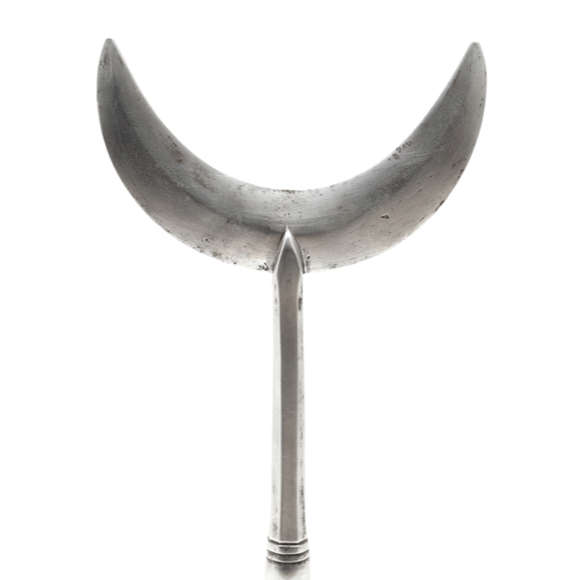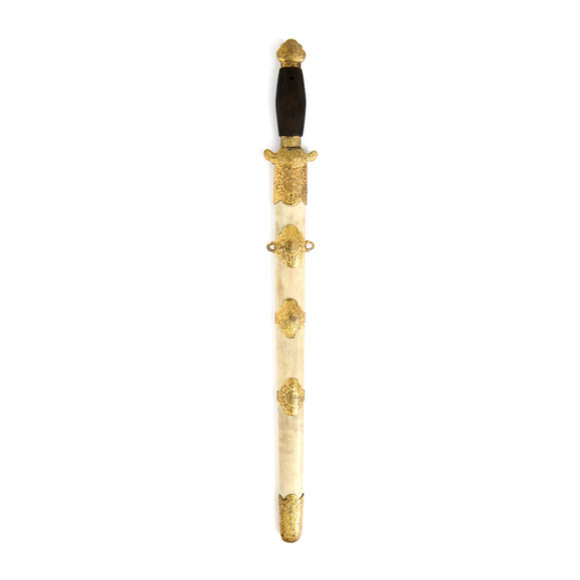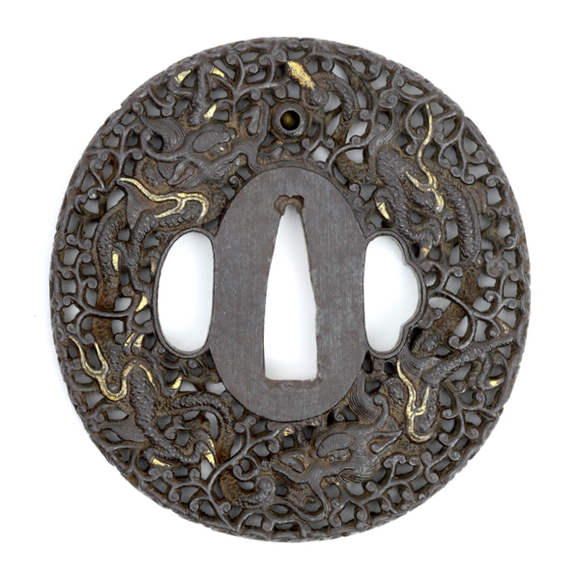Language: Mandarin Chinese
Source: Classical literature
Description
Dāo dǐ yún (刀底雲) literally means "saber end cloud".1 It is a type of Chinese scabbard endpiece with cutouts in the form of highly stylized clouds. The style originated in elite circles as a revival of earlier Ming aesthetics and slowly gained popularity from the mid 18th century onwards and became standard on most military sabers by the 19th century.
The shape referred to the imperial troops being the "heavenly troops" whom, through the emperor, helped execute heaven's will.
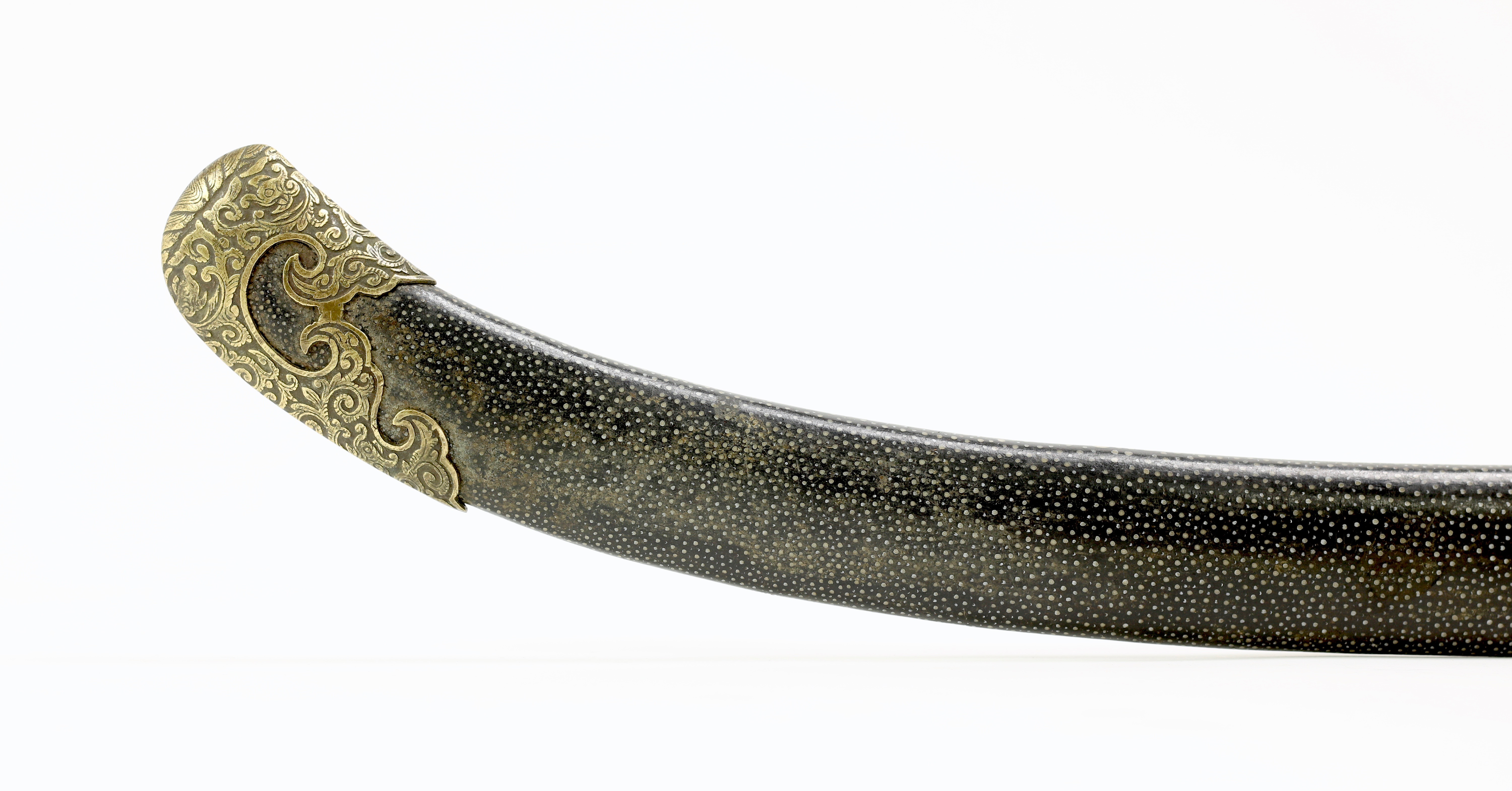
Scabbard endpiece with stylized cloud cutouts on a southern Chinese military saber.
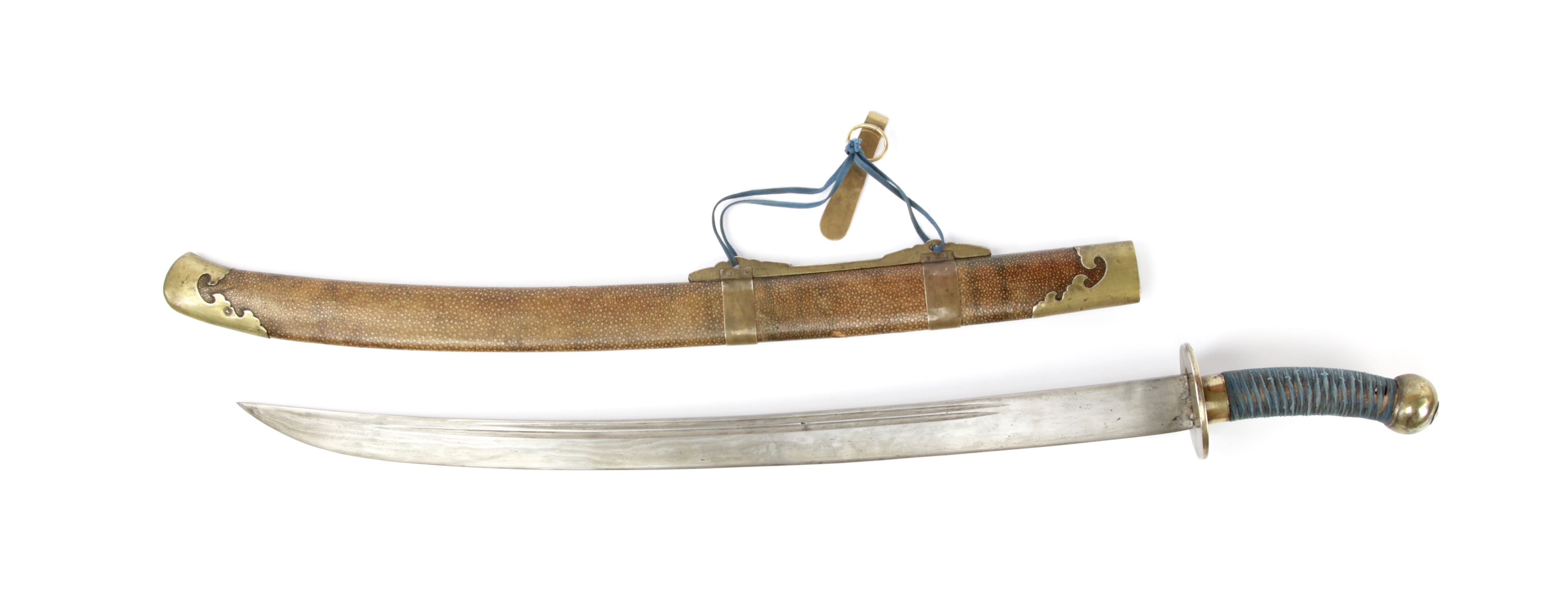
A standard Qing military pattern saber of the mid 19th century, showing the style in full with a matching mouthpiece.
Also see
For a complete overview of saber terminology, see: A Chinese saber glossary.
References
1. Gongbu Junqi Zeli (工部軍器則例) or "Regulations and precedents on military equipment for the Board of Works" of 1815. A Qing imperial text dealing with the details of arms manufacture.
